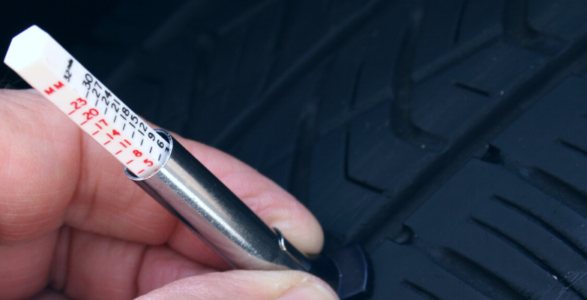Tyre Blowout: Causes, Prevention and How to Handle

Published 25 February 2017
It is important to understand what measures you can take to minimise the chance of a tyre blowout.
Getting a tyre blowout is rare, but knowing what to do if it does happen can keep you safe in a very dangerous situation.
What is a Tyre Blowout?
This is a very sudden and rapid loss of pressure where the tyre is quickly destroyed, making it difficult to drive.
A blowout can damage the wheel itself and the surrounding area of the vehicle.
What Causes a Tyre Blowout?
The most common tyre blowout causes are:
Under Inflated Tyre
An under-inflated tyre will bulge out under your car’s weight, causing it to bounce up and down when driven at speed. This then causes a high level of friction, resulting in heat that will weaken the tyre and eventually leads to it bursting.
Over Inflated Tyre
If the pressure inside the tyre is too high, this will put excess stress on the outside rubber skin, making it more susceptible to damage.
Alignment issues
When wheels are out of alignment, areas of the tyre are forced into contact with the road causing rapid tyre wear. The degradation of the tyre leads to blowouts.
Potholes, Kerbs and Debris
Driving at speed over a pothole, up a kerb or over sharp or hard debris in the road can destroy the rubber and cause an immediate tyre blowout.
Vehicle Overloading
Putting too much weight on your tyres will increase contact with the road, and can lead to the rubber experiencing more wear, and lead to a temperature rise which may make the overheated tyre blow out.
Excessive Tyre Wear or Age
Damage to the tyres can often be seen as blisters in the skin or cracks in the sidewall. One fissure could easily expand to cause a blowout.
Over time tyres can be attacked by mould and spores that cause the rubber to lose tensile strength, weakening the tyre and causing a blowout.r driving in a smooth manner, once you have made your decision on where you need to get to, to be safe, ease off the accelerator. If you are in a manual car change the gears down to help you to slow and come to a stop.
How To Deal With A Blowout
The priority immediately after a blowout is to regain and maintain control of the vehicle.
- Keep a firm grip on the wheel – the car will want to pull in the direction of the burst tyre, so it’s important you keep the wheel firmly in both hands to keep the car as straight as possible.
- Don’t use the footbrake, as this could cause the car to spin out of control. Just gently ease off the accelerator to decrease speed. The key is to keep your car going as smoothly as possible. If you must use the footbrake – be incredibly gentle and cautious.
- Lowering your gear can help reduce speed, but be incredibly cautious about rushed or sudden changes that can cause the car to jolt. Remember that you’re already suffering from reduced control.
- Pull-over safely – as soon as safely possible, pull your car over to the side of the road and put your hazards on. Ensure that other motorists are aware that you have stopped by deploying reflective safety triangles behind your car if you have them. When you leave your car, it may be better to exit at the passenger side and wear reflective clothing if possible.
How to Prevent a Tyre Blowout?
The aim is to keep your tyres in a roadworthy condition, so they are not susceptible to blowouts.
To achieve this you should carry out regular maintenance checks.
Checks should be carried out, whilst tyres are cold.
Check the tyre pressure weekly and before every longer journey. You should also check your pressure when the temperature drops significantly. The more you drive, the more frequently you should check.
Check tread depth to ensure they are within acceptable levels. Replace when the tread is below the safe limit of 3mm.
Visual checks. Inspect the tyres for signs of cracking, bulging or other damage to the rubber. Replace any damaged tyres.
Avoid:
- Potholes
- Mounting kerbs
- Scuffing your tyres against kerbs or similar
- Parking with tyres against the kerb
Compass Vehicle Services Ltd offer:
nationwide car leasing – bad credit car finance – used car deals – personal leasing – business car leasing – best car lease deals – non-status car leasing
Back to all help and advice articles



